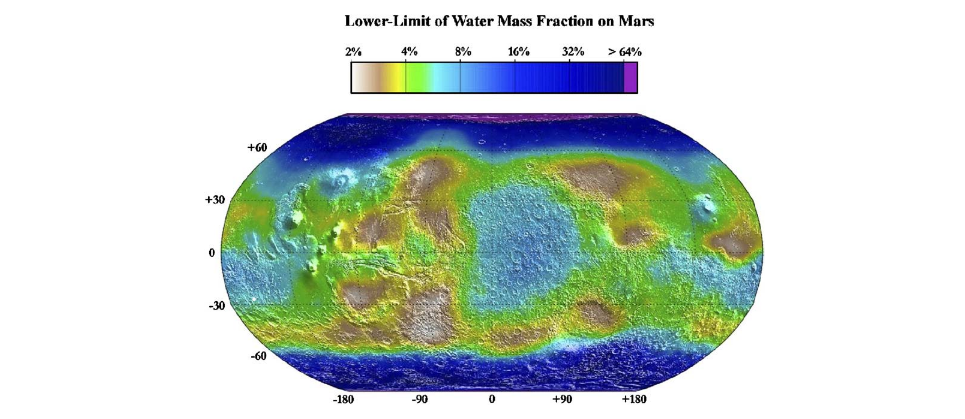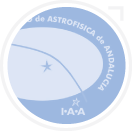Subsurface
Processes active in the subsurface of Mars are currently inaccessible to conventional instruments, but subsurface processes may produce emission of trace gases into the atmosphere, observable with current or future instruments. Observing and understanding the production of these gases requires a holistic understanding of their transport from the subsurface to the atmosphere. UPWARDS aims at creating a ground-breaking end-to-end link between locations of subsurface ice/clathrate deposits (which can trap gases), their destabilisation and the subsequent material transport to the surface and atmosphere.
The destabilisation of subsurface ice and/or clathrates has been proposed as a mechanism for the formation of apparently present-day active fluid features on the surface and as a source for atmospheric trace gases such as methane. The puzzling detection of methane reported by several authors, including its claimed spatial variability, has led to the suggestion of potential sources located in the atmosphere, the surface or the subsurface.
Although methane aspects like the spatial variability cannot be explained by known atmospheric chemistry nowadays, which imposes strong conditions for sporadic releases from such sources, it remains unknown whether these processes are active, or whether methane is a remnant of a more geologically active period. Gas released from geological or biological sources deep in the crust may take a significant time to travel to the surface, depending on the mechanisms of transport. Our incomplete knowledge of the Martian subsurface environment makes it difficult to assess the rate of any such transport.

This illustration portrays possible ways that methane might be added to Mars' atmosphere (sources) and removed from the atmosphere (sinks). NASA's Curiosity Mars rover has detected fluctuations in methane concentration in the atmosphere, implying both types of activity occur in the modern environment of Mars. Mars Science Laboratory
The surface heat flow is important for understanding the thermal state of the subsurface. No direct heat flow measurements exist for Mars. A commonly used indirect method is based on the relation between the thermal state of lithospheric rocks and their mechanical strength. This analysis applied to regions of different ages, provides information on the thermal evolution of the planet.
The only estimates of present-day heat flow were performed for polar regions based of surface loading and deflection caused by ice caps. Most present-day heat flow values come from theoretical models of mantle convection and rely on generic theoretical considerations . UPWARDS, will make use of the geographical distribution of crustal radioactive elements obtained by MO/GRS, surface temperature values from MGS/TES, and topography from MGS/MOLA and MEX/HRSC, along with estimates of lithospheric strength, to develop a new surface heat flow model for Mars beyond the state-of-the-art. We will derive (WP2) present-day and past epoch pressure-temperature maps of ice table depths and compare our results with geological observations of water-related activity, and will define scenarios of subsurface ice/clathrate destabilisation zones, potential sources of trace gases (including water vapour).

Global model of present-day surface heat flow. (Parro, Díaz & Ruíz)
Water vapour from the atmosphere can diffuse downwards through the regolith and form subsurface ice by condensation, which can be important for the full water cycle. We will model this atmosphere-subsurface water vapour exchange with a model which will monitor the temporal evolution of the downward transport, ice redistribution and porosity changes. We will provide plausible scenarios for the evolution of near-surface ice through comparison with present-day near-surface ice distribution from MEX/MARSIS.

Percentage water content of soil as derived by Feldman et al. (2004) from the epithermal-neutron analyzed by the Gamma Ray Spectrometer onboard Mars Odyssey. Even if the data strongly suggests a large global supply of H2O, some portions of the hydrogen atoms may be linked to the presence of methane in clathrates
The variations of the ice and clathrate thermophysical stability zone in the crust around landing site locations (e.g. ExoMars, InSight) and trace gas observation areas such as Terra Sabae, Nill Fossae and Syrtis Major will be studied as a function of time with a thermal model. Focus will be mainly on methane and carbon dioxide clathrates but also on the presence of inhibitors. Hydrate formation and dissociation rates will be coupled with this thermal model and the heat flow scenarios will be used as inputs for the lower boundary conditions. The type of soil, composition and ice tables controls the geothermal conditions and therefore the depth of clathrates formation and destabilisation.

The majority of Martian subsurface trace gas transport studies concentrate on water vapour and the application to other trace gases requires significant modifications. Within UPWARDS, we will develop a new subsurface gas transport model beyond the state of the art to assess timescales required for the transport of trace gases released through destabilisation to the surface. We will use e.g. the ‘dusty gas model’ approach to provide a new comprehensive scheme of gas transport in the subsurface.
We plan to characterise its transport through the atmosphere once gas reaches the surface, using atmospheric modelling informed by data assimilated from MGS/TES, MO/THEMIS and MRO/MCS. Recent GCM simulations have shown the potential of such studies to constrain plume source conditions. Scenarios of mass wasting effects (debris flow or impact events) which may result in trace gas release events will be investigated using data from MEX/HRSC and MRO/HiRISE. Iterative modelling of subsurface episodic release will be used to link trace gas observations and constrain subsurface sources and surface adsorption effects, which has never been previously attempted. The lack of in situ subsurface measurements to date (until InSight, 2016) emphasises the novelty and innovation, providing a unique opportunity to combine subsurface, surface and atmospheric areas of science to produce a new dataset of trace gas transport.

Recurring slope lineae are narrow (<5m wide) dark markings in steep slopes on Mars. This image shows the fading and re-appearance of such markings during 1 Martian year in an impact crater in Newton Basin observed by HiRISE/MRO (McEwen et al, 2011). The marks grow during warm seasons and fade in cold seasons. Liquid brines in the subsurface might explain this behaviour but the precise mechanism is unknown. Like water, other trace species in subsurface calthrates may also be released at different timescales in specific areas after their destabilisation. These mechanisms will be investigated as part of the UPWARDS project.
Summary outcome: Global surface heat flow model for present day Mars consistent with satellite observations; Maps of ice table locations; Models of gas diffusion and thermal structure of the crust
Dedicated Work Package: WP2
Links to other UPWARDS activities: WP4,WP9
Related Papers:
McEwen, A. S., Ojha, L., Dundas, C. M., Mattson, S. S., Byrne, S., Wray, J. J., Cull, S. C., Murchie, S. L., Thomas, N. and Gulick, V. C., Science, Vol. 333, pp. 740 (2011)
Atreya, S. K., Witasse, O., Chevrier, V. F., Forget, F., Mahaffy, P. R., Buford Price, P., Webster, C. R. and Zurek, R. W., Planet. Space Sci., Vol. 59, pp. 133-136 (2011)
Ruiz, Scientific Reports 4, 4338,doi:10.1038/srep04338, (2014)
Ruiz, J., López, V. and Dohm, J.M., Icarus, Vol. 207, pp. 631-637, (2010), Ruiz, J., McGovern, P.J., Jiménez-Díaz, A., López, V., Williams, J.P., Hahn, B.C., and Tejero, R., Icarus, Vol. 215, pp. 508-517 (2011)
Clifford, S.M., Lasue, J., Heggy, E., Boisson, J., McGovern, P., and Max, M.D.,J. Geophys. Res., Vol. 115, E07001(2010)
Stevens, A.D., Patel, M.R., Lewis, S.R., Submitted to Icarus (2014)
































